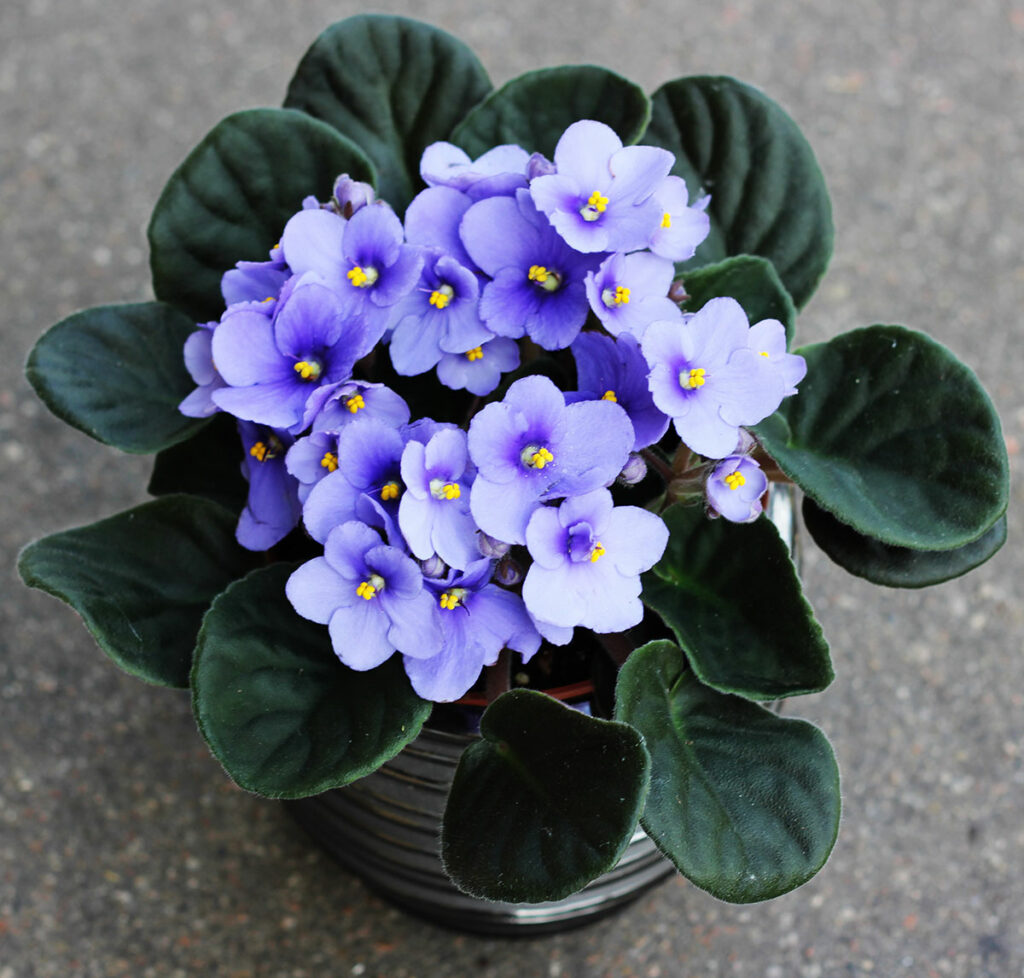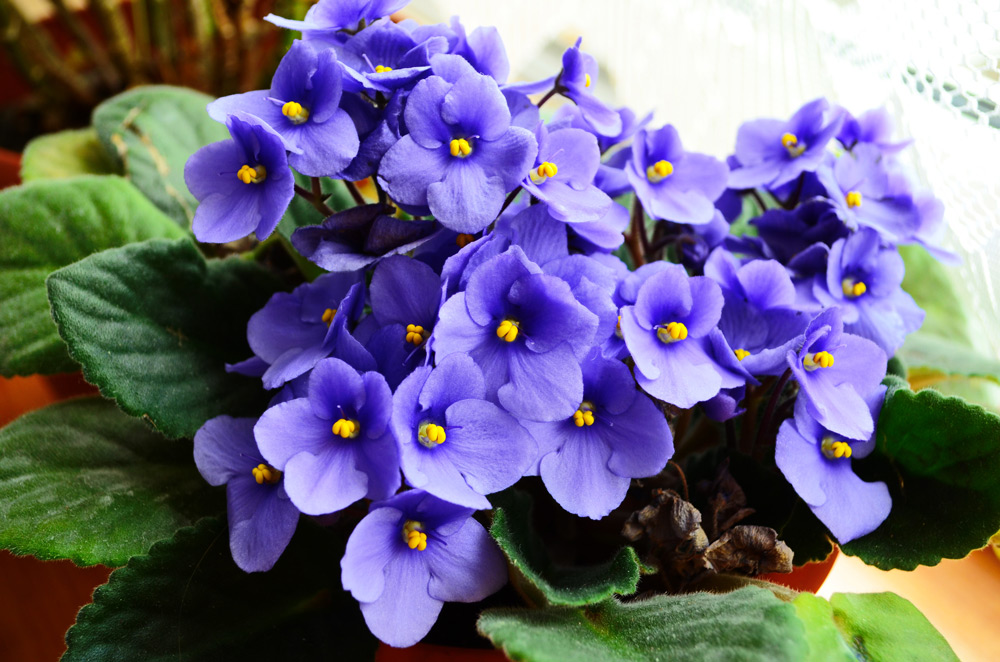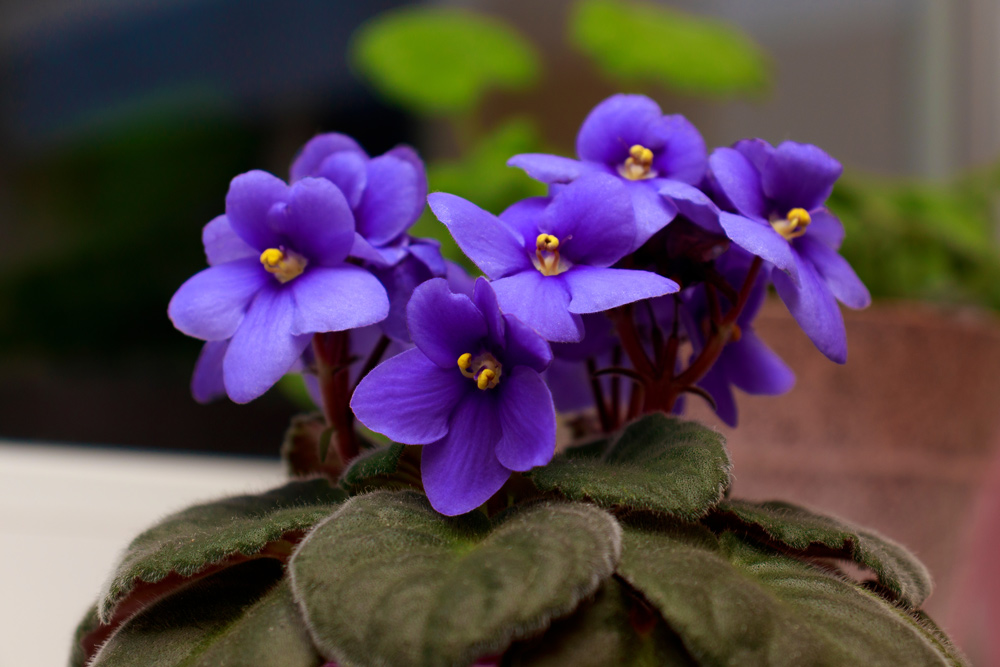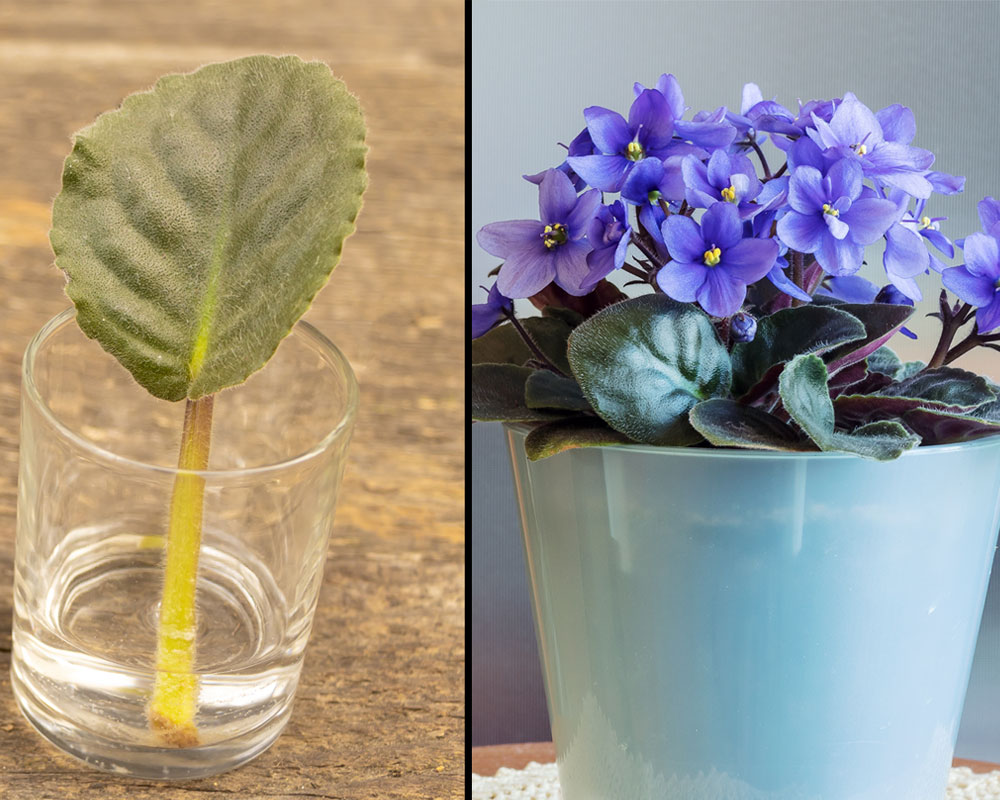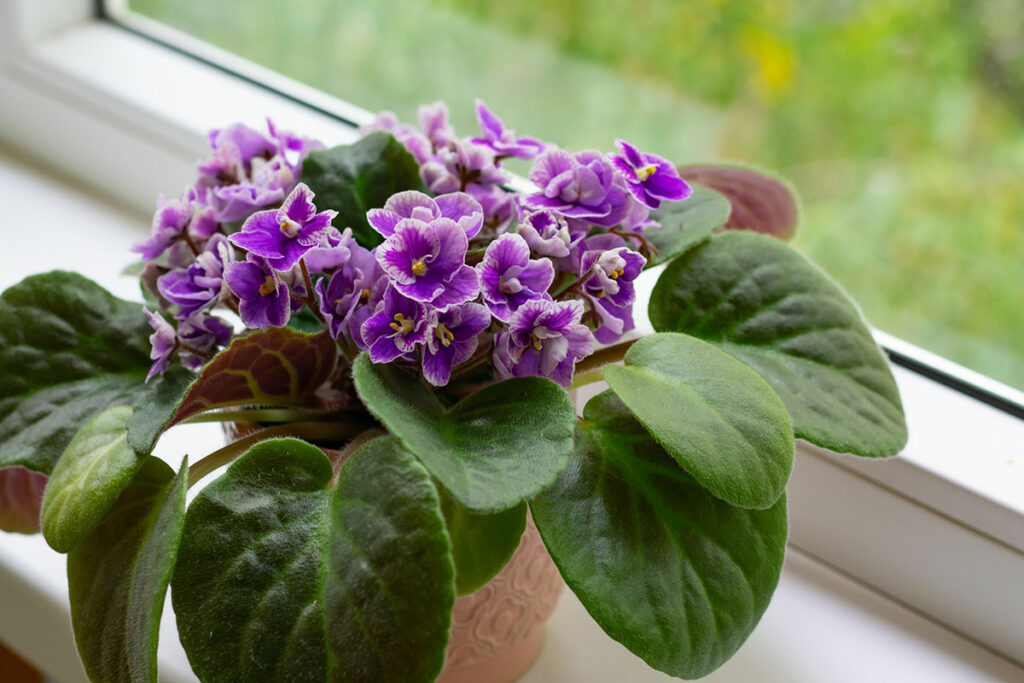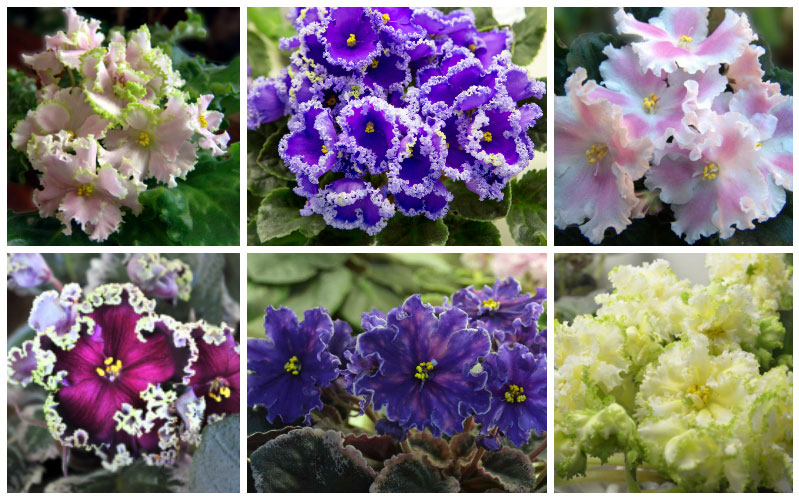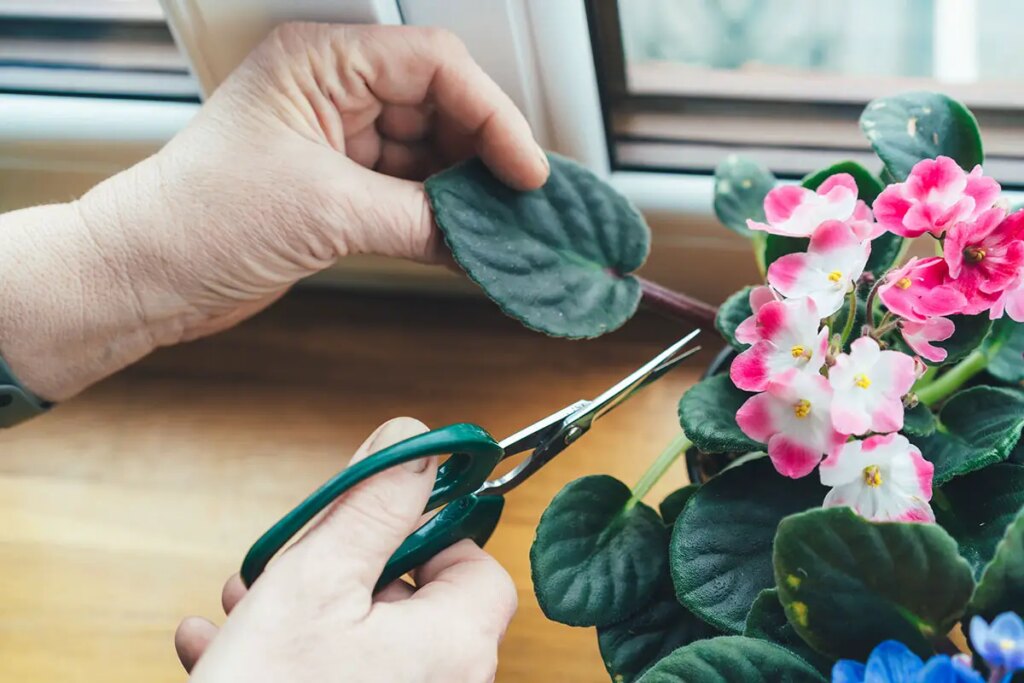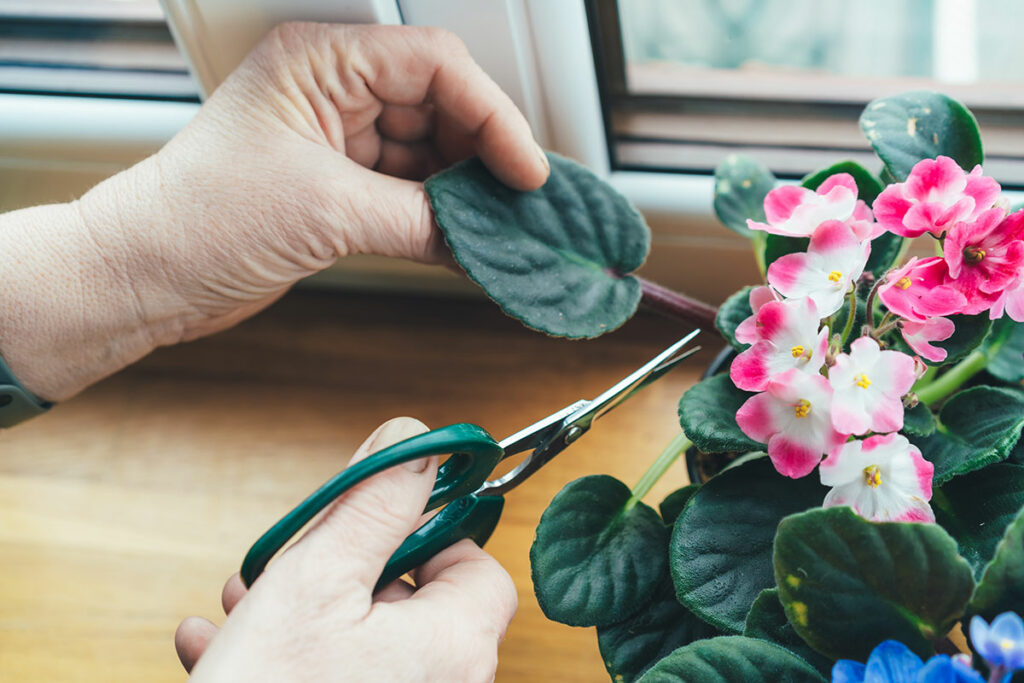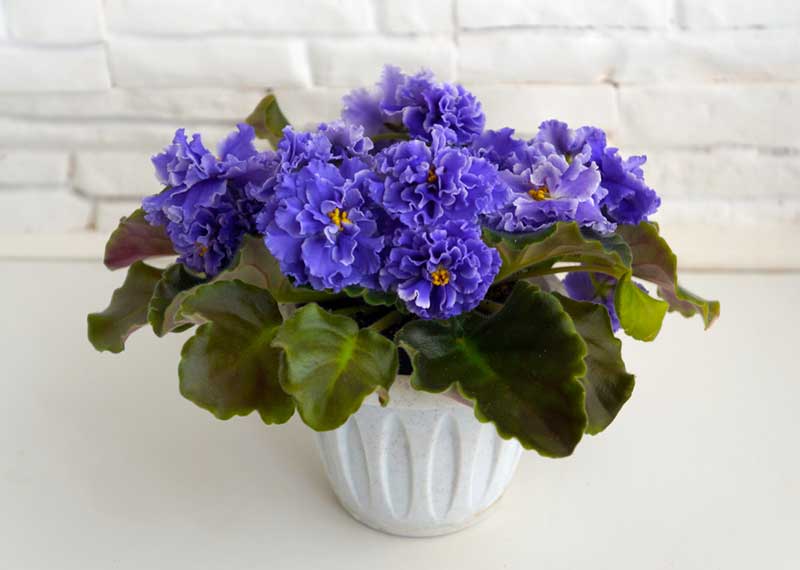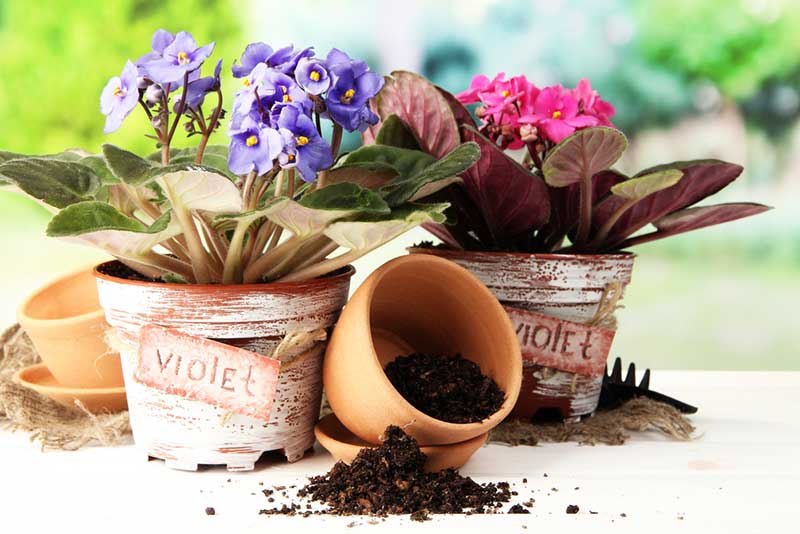African Violets are a much-loved tropical houseplant grown for their attractive blooms.
While they are not difficult to grow, they do require a specific growing condition in order to produce those stunning flowers.
Failure to provide them with their ideal growing conditions will result in poor growth and no blooms.
Light is Important
Even though they can bloom in lower light than most other types of flowers, they still need adequate lighting in order to flower. More light is typically needed for a plant to produce flowers than is needed to produce foliage.
The ideal location for African Violets to obtain the right amount of light for flowering is a west-, south-, or east-facing window where they can receive indirect but bright light.
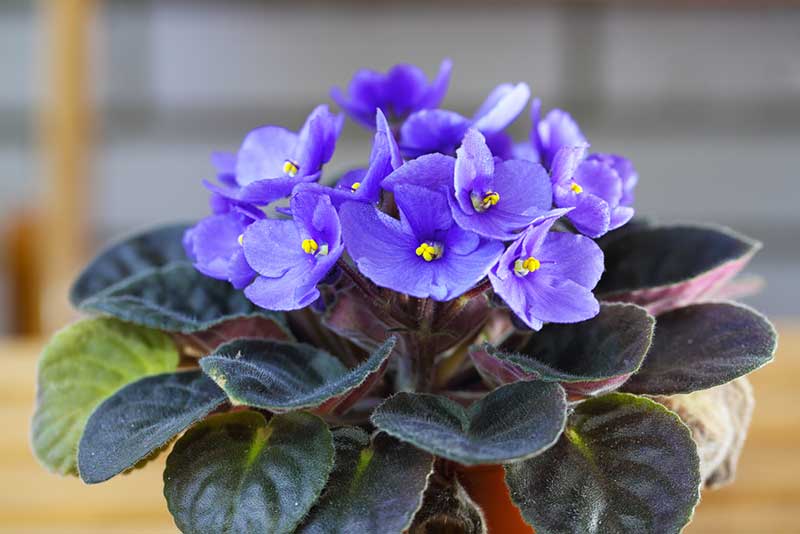
If you’re using artificial light for the African Violet, you may need to change the light duration. For example, if you are currently growing the plant under 12 hours of artificial light, reduce that duration to 10 hours for a couple of weeks, and then increase it back to 12 hours. This can help stimulate flowering.
Just the Right Amount of Water
Water is another factor that can greatly impact whether or not the African Violets produce their stunning blooms. Too little water and you have a dry plant that produces no flowers and has wilted leaves.
Too much water, on the other hand, will give the plant water-logged roots that lead to fungal diseases which can quickly kill the plant.
The best method for watering is to wait until the top two inches of the plant’s soil is dry and then water deeply.
Don’t Forget the Nutrients
Just as with any living creature, African Violets need adequate nutrients in order to thrive and produce their colorful blooms.
In most cases, a balanced liquid fertilizer, such as 20-20-20, works well to provide the plant with the much needed nutrients.
Make sure to follow the application instructions on the back of the fertilizer, and only apply during the plant’s active growing season, which is spring, summer, and early fall.
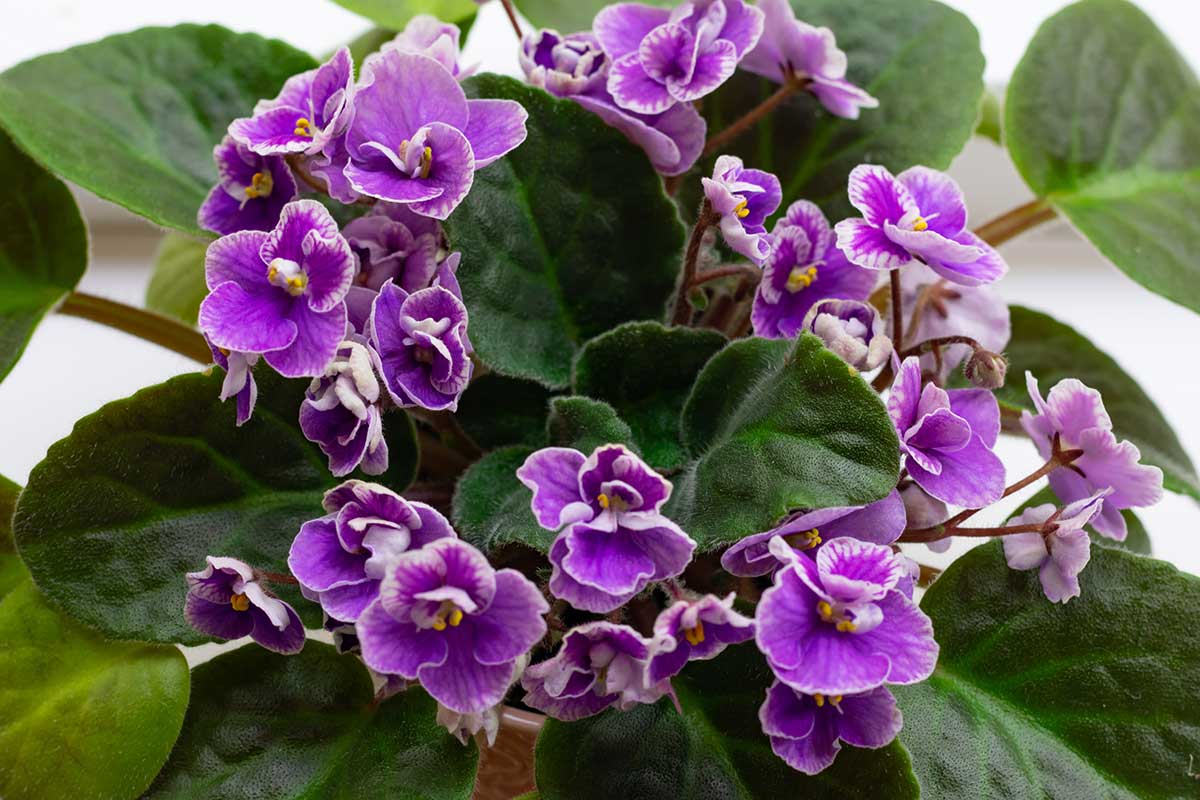
Increase the Humidity and Check the Temperature
African Violets are tropical plants native to the cloud forests of eastern Africa. They need about 80% humidity and temperatures between 65 and 80 degrees Fahrenheit to keep them healthy.
If they don’t get these higher humidity and temperature levels then they cannot produce their much desired blooms.
Placing a humidifier near the plant or using a pebble tray will help increase humidity levels. Furthermore, avoid placing the plant in an area where there are sudden temperature fluctuations, such as near doors or vents.
Growing in the Wrong Soil
Dense soil with poor drainage can spell disaster for African Violets. Not only does it prevent the plant from flowering, but it can also stunt the plant’s growth and even lead to fungal problems, such as root rot.
The ideal soil for African Violets is well-draining, loose, and porous.
A good general soil mix for African Violets is equal parts peat moss, perlite, and garden soil.
Promote Flowering with Pruning
According to the Missouri Botanical Garden, you can stimulate flowering by pruning the African Violet. The plants produce rows of leaves that will only flower once.
Once the rows have more than 5 leaves, the size and amount of blooms the plant produces decreases.
Using a clean and sanitized pair of pruning shears, carefully remove the outside leaves of the plant. This gives the inside leaf row a chance to produce blooms.
More African Violet Tips:

